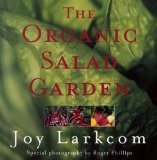
Perennials, Annuals, and Bulbs for December
Dr. Joel Poinsett, the 1st US ambassador to Mexico,
brought the poinsettia to US in 1828. The plant,
called "flower of the blessed night" in Mexico was
renamed in Poinsett's honor.
- Tender plants in perennial gardens benefit from a light covering of evergreen boughs or oak branches with their leaves intact.
The purpose of this covering is to lessen desiccation or drying out by wind. Take care not to smother the plants. You should be able to
see the plants through the branches.
- If outdoor plants dry out during the winter, the foliage can be damaged. Water plants in late summer and fall, especially if rain
has been less than normal, and on warm winter days if soil is dry.
- Warm spells in winter: Sometimes in the middle of winter, we suddenly get a few warm days. For the most part, this is not a big problem, but you
may need to check on a couple of things. If you covered your roses with rose cones, you may need to ventilate the cone to prevent heat from building
up inside. The same should be done with coldframes. If it is a warm, sunny day, the temperatures may be rising in the cold frame more than you expect.
Remember to close vents as the temperature drops again at night.
- If stored bulbs begin to shrivel, they are too dry. Place them in a container with potting medium, peat moss, or sawdust to stop the loss of water.
- Many gardeners choose to use inverted clay pots to cover perennials for an advantage of protection from drying winter winds. Chicken wire
can be fashioned to stand over a large garden bed, and can be covered with burlap. Secure the burlap edges to the corners of the frame.
Perennial vegetables such as artichokes, asparagus, chayotes and rhubarb can also be protected this way.
- To avoid harming near-dormant plants during the winter, do not fertilize, and reduce watering until growth resumes in the spring.
- A light covering of hay or leaves over perennials inside the cold frame gives added protection from low temperatures and bright sunlight.
- Bulb forcing can be started as late as mid-winter. Plant tulip bulbs with the tops just above the soil line and the flat side of
the bulb toward side of the pot. Plant daffodils with the bulb tops even with the soil line. Hyacinth bulbs should be planted
with the tops just above the soil. Crocus bulbs should be planted about 1 inch below the soil surface.
- Mums and pansies tend easily to be heaved out of the ground during weather freezes and thaws, causing root damage. Place
discarded Christmas tree branches over flower beds to prevent this from happening.
- Use branches from discarded Christmas trees to mulch beds of bulbs.
- Mulch perennial borders after the ground freezes to a depth of a two or three inches. Applying mulch too early increases the
chance of harboring destructive field mice that are still on the lookout for comfortable winter quarters.
- Sow seeds of alpine plants early in December in an outdoor coldframe. Ideally, the seeds should remain frozen until March,
then germinate in spring, so the frame should be kept shaded and ventilated. Seeds also may be sown in flats and placed in some
convenient, shaded, outdoor location where they will stay frozen until spring. A good covering of snow seems to help.
- Winter protection for peonies is necessary only the first winter to help prevent frost heaving. Mound soil over the new
planting for several inches, or after the ground freezes hard, mulch with evergreen boughs or straw. Don't use a material that
will mat down, such as leaves. In extremely cold climates, 10 to 20 degrees below zero, protection also is necessary for tree peonies.
- Check dahlia tubers and gladiolus corms in storage. If they are sprouting, place them in a cooler spot. If they show signs of
shriveling, rewrap them in ventilated plastic bags. Moldy or damaged roots must be removed and discarded. Molding indicates
over-moist conditions. Move healthy bulbs to a location with better ventilation, and set in dry peat moss.
"He who plants a seed beneath the sod and waits to see a plant, believes in God."

FREE Garden Journal!!
Join "Garden Notes" and plan for Harvest Success as you track and record your gardening progress.
Your Free Personal Garden Journal has pages for jotting down notes on the seeds you start,
your new plantings, when you fertilized, and even a graph to plot a new garden.

FREE Report
If you're interested in growing tomatoes, you've got to read this free report, because you're about to find out
3 age-old, tried and tested, organic tomato growing secrets that turn any tomato plant into a thriving source of the
juiciest, most
mouth-watering tomatoes you've ever tasted.
I didn't want to see another internet "eBook" on growing anything, but my husband signed up for Kacper's free report and I have to tell you, it is WELL worth the read. If you think you know everything about growing tomatoes, I challenge you to read Kacper's report. HIGHLY recommended!
Free Report Here

What's New?
Discover How To Easily Build An Attractive And Affordable Greenhouse That Will Grow Anything In Any Conditions… Also, building your own greenhouse just makes economical sense. You can build a greenhouse at just a fraction of the cost of buying a pre-built one. Most pre-built greenhouse you buy need to be assembled anyway, you’re really just paying hugely inflated prices for the material.
Click Here!
Book of the Month

Based entirely on organic gardening principles. This says it all. Joy's book has been fully revised and updated and includes extensive new reading, particularly
on oriental and fruiting vegetables, and did I mention, is now entirely based on organic gardening practices.
Read More...






